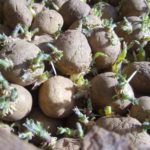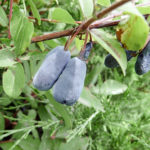Hydrangea paniculata Diamantino
If you are a lover of noble flowers, do not ignore the beautiful hydrangea. There are many varieties of this delightfully beautiful crop, distinguished by a variety of colors and splendor of inflorescences. One of those that can often be seen in the gardens is Diamantino. And believe me, he has every chance to become the diamond of your flower garden!
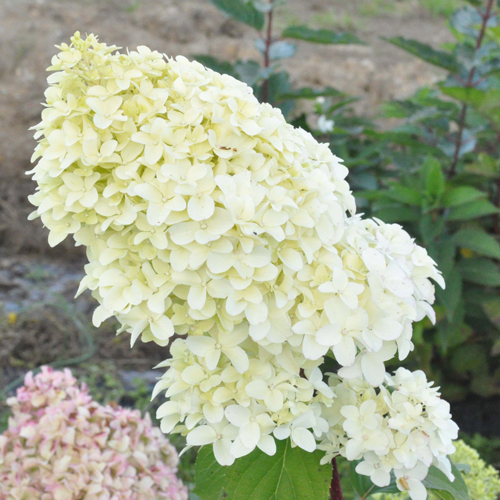
Description
The country of origin of this variety of spectacular flower is Holland. Our heroine belongs to the group of panicle hydrangeas. The plant looks like a lush bush with a somewhat elongated or flared shape. In height, it sometimes reaches 1.20 meters, the minimum value of this indicator is 100 cm. The same is true for the width of the bush. The culture has tough, straight stems that do not need a garter. Thanks to them, the bush retains its shape. Shoots grow stiff in the second year of the growing season. A dense crown is formed by opposite rough ovoid leaves, the outer side of which is painted in dark green, and the lower one in gray-green.
The inflorescences of this plant are large and strongly rounded. These two features distinguish the variety from others. The size of Diamantino inflorescences varies from 20 to 25 cm. The type of inflorescence is a panicle, dense and very dense. For this reason, Diamantino is rightly called paniculata.
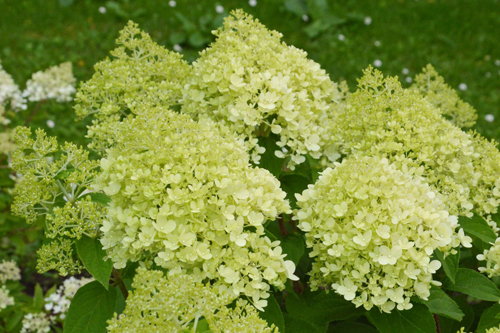
What is the shade of the flowers of this culture? There is no single answer to this question. Sterile flowers change color several times per season. At the very beginning of flowering, they are sustained in a yellow-green range with a golden tint, in the middle of the phase they become snow-white, and at the end they acquire a pale pink color. Hydrangea is characterized by long and very abundant flowering, starting in the first half of June and ending in September. If you follow the care recommendations, flowers are formed on a young plant already at the age of 3 years. In October, small fruit-boxes are formed in their place, not exceeding 3 mm in length.
Diamantino is suitable for cutting. Shoots with lush, delicately fragrant inflorescences look decent both by themselves and in bouquets, while retaining freshness for a long time.
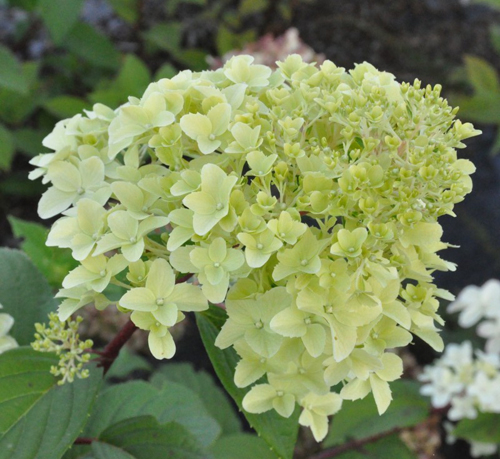
Growing features
The plant is recommended to be placed in an area well-lit by the sun's rays, but on a hot afternoon it should be in light partial shade. It is also important that the place where the culture will be planted is well ventilated. The soil is chosen moist and fertile, including humus, peat and leafy soil. By the way, the acidic environment of the soil gives the inflorescences a blue tint, and the alkaline one - a raspberry color. More about how to change the color of a hydrangea growing in a garden, you can find out in one of our other articles.
This variety is one of the moisture-loving varieties, therefore, for its normal development, you should take care of regular, timely watering. Fertilize Diamantino 3-4 times per season. It is good if you use the extended release mineral complex. This measure is necessary for lush and abundant flowering. In the spring, pruning is required. During this event, weak shoots are removed. Healthy ones also cut off up to 2-3 kidneys.
The plant is winter-hardy, therefore it does not need shelter. Diamantino can withstand temperatures down to -28-30 ° C. But the flower is not particularly protected from pests and diseases: it is affected by white and gray rot, powdery mildew.
Use cases
A lush blooming culture looks gorgeous in single plantings. However, a greater visual effect can be achieved by including the flower in mixed garden compositions, decorating hedges or mixborders with it. The culture goes well with flowering perennials.Just do not plant other plants close to the noble beauty - hydrangea develops successfully only if there is sufficient free space around. Diamantino is a long-lived plant, which means it will delight you with elegant flowers for many years!
